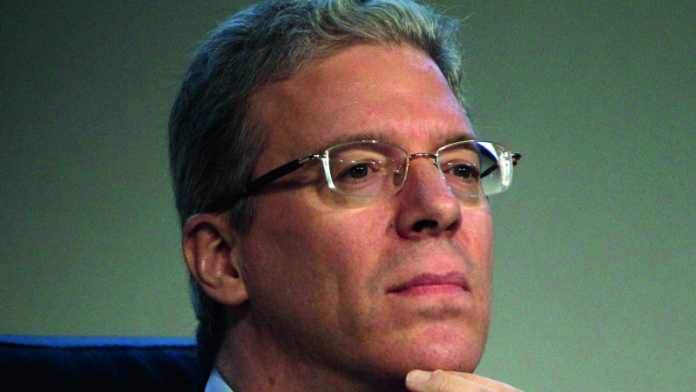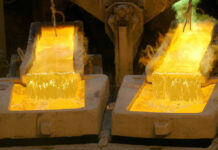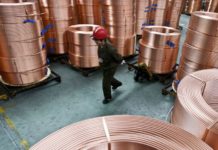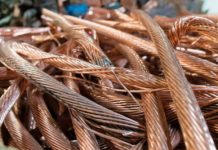
ONE of the more chastening points made by Tom Albanese, CEO of Vedanta Resources, was that the company was able to cut the cost of its Gamsberg zinc project by a third to $400m partly owing to the lack of new investment in South Africa.
Vedanta unveiled plans in November 2014 to build a 250,000 tonnes/year open pit zinc mine at Gamsberg, a property previously owned by Anglo American and Gold Fields of South Africa.
A refinery would also be established at the nearby Skorpion mine which was built by Anglo American back in the day and producing 150,000 tonnes/year of zinc concentrate.
In the teeth of the commodity downturn, however, Vedanta said it would trim capital expenditure on the mine, a development that Albanese said was possible partly owing to the decline in the value of the rand against the dollar, but also because there was fierce competition among suppliers.
Said Albanese of the cost-cutting: “…part of it was actually getting better quotes – [Gamsberg] being the only major project in South Africa. People are chasing that business, and that helps the project”.
The mine is due to produce its first zinc in 2018/19 although additional plans to extend the resource at the old Skorpion mine may be delayed, according to a report by Deutsche Bank. This would have the effect of the mine closing in 2017 instead of 2019 as previously anticipated. This would, in turn, have an impact on the zinc market which is already seeing supply reductions.
“Of all of the most recent developments perhaps the most significant [in the zinc market] is the deferral of pre-stripping at the Skorpion zinc mine in Namibia may now close by the middle of 2017 instead of 2019,” said Deutsche.
This raises the prospect that Vedanta’s integrated smelter at Skorpion may stop production until alternative feedstock is available from the Gamsberg project which would remove an estimated 140,000 tonnes of refined metal from the market.
Albanese said there had been no permanent decision on extending the Skorpion mine as the company was still drilling the remaining resource whilst the zinc market continued to be fluid, although improving. He also raised the prospect of establishing an underground mine to access more of Skorpion’s resource.
“In the current environment, we flagged that it may not be attractive right now to go after that next pit phase right away. The resource is still there and, by the way, there’s a lot of other drilling activity,” he said.
“As we drill, we’re also probably going to find sulphidic resources in addition to the oxide resources,” he said. “So what I think we just need is some time to continue the evaluation of the resource below the current planned pit envelope to determine whether there are these oxide resources; and are there other resources”.
Once the combination of oxidic and sulphidic resources is known, the company can make an investment decision. “We may even find we want to go after it with an underground mine because, again, the orebody is getting narrower with depth and it’s even continuing below the ultimate next lift. So maybe an underground option is attractive,” he said.
Albanese also said that spending on the project in Vedanta’s 2016 financial year might be increased over its last budget in which it cut expenditure to $40m from $80m, which was itself a reduction over the $250m first budgeted.
This was because the project had been derisked.
Apart from competitive vendor quoting, rand weakness had also assisted with the cost of the project, whilst electricity supply from Eskom was not as large a problem as in 2014 owing to the fall in economic activity in South Africa. As a result, the project has the same forecast returns despite the lower zinc price. “It gave us the confidence that we can bring some of those monies back into our planning horizon for this year,” Albanese said.
He added, however, that no final decision had been made although the market was looking more supportive whilst Vedanta’s balance sheet had also improved. Spending across the group was increased to $1bn from $600m for its 2017 financial year.
ZAMBIA
The last two years have seen the business environment in Zambia deteriorate owing to the twin problems of fiscal uncertainty and a crippling drought which has lowered the availability of hydropower. The response from mining companies, Vedanta included, was to cut production and jobs.
However, there appears to have been a response from the Zambians in terms of the things they could control. That meant repealing legislation to impose royalties on its mining sector returning to a predominantly income tax environment – a development that Albanese said was recognition of the difficulties in the copper market where prices have been under pressure, falling a third from its $3,00 per pound ($/lb) in 2013 to about $2/lb today.
“I think we have seen a greater recognition in Zambia that the markets for copper globally are quite difficult and that the government and stakeholders in Zambia can’t take it for granted the health of the Zambian copperbelt in an environment of weak copper markets,” he said.
But the drought that led to lower reservoir levels and curtailed electricity supply were expected to continue and hamper the industry for the next year or two years, said Albanese.
Quite how this will effect Vedanta’s Nchanga underground mine remains to be seen. Mining has been suspended because it was “… losing a lot of money last year and basically bringing down the overall financial issue,” said Albanese. It could, however, be re-opened











